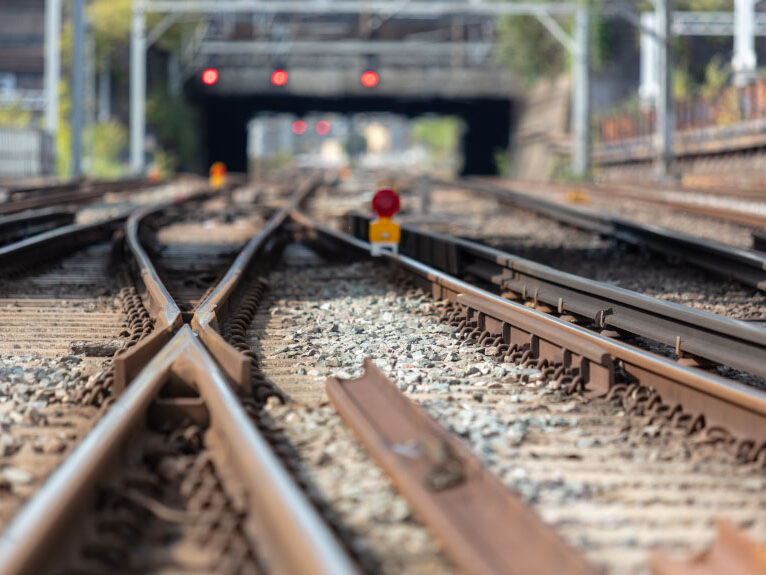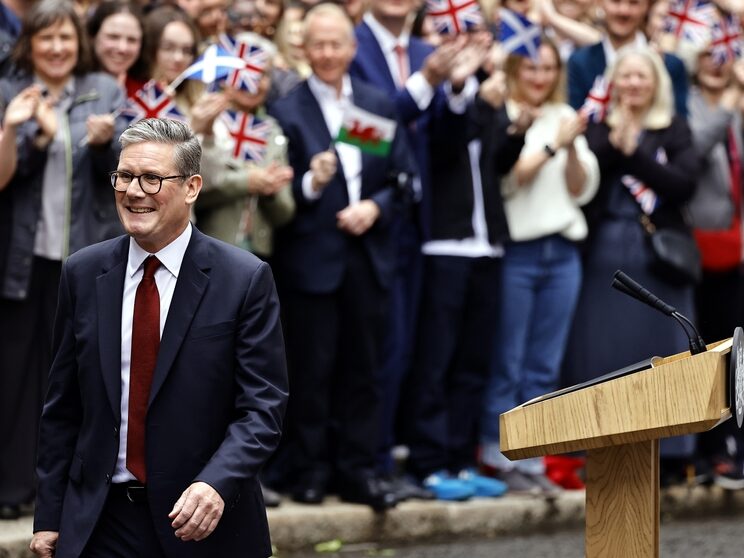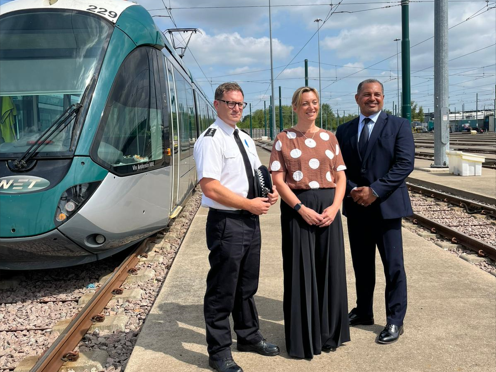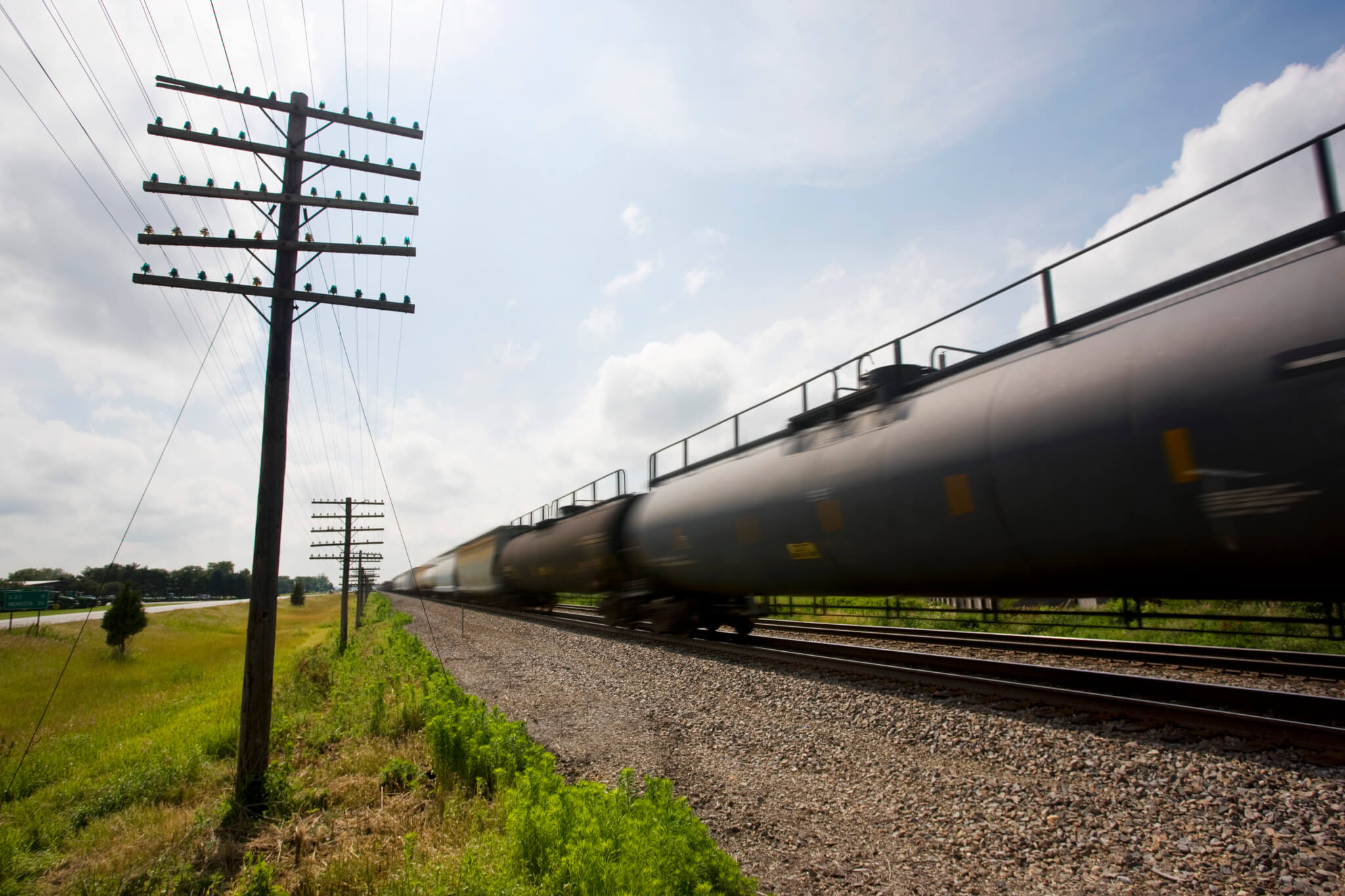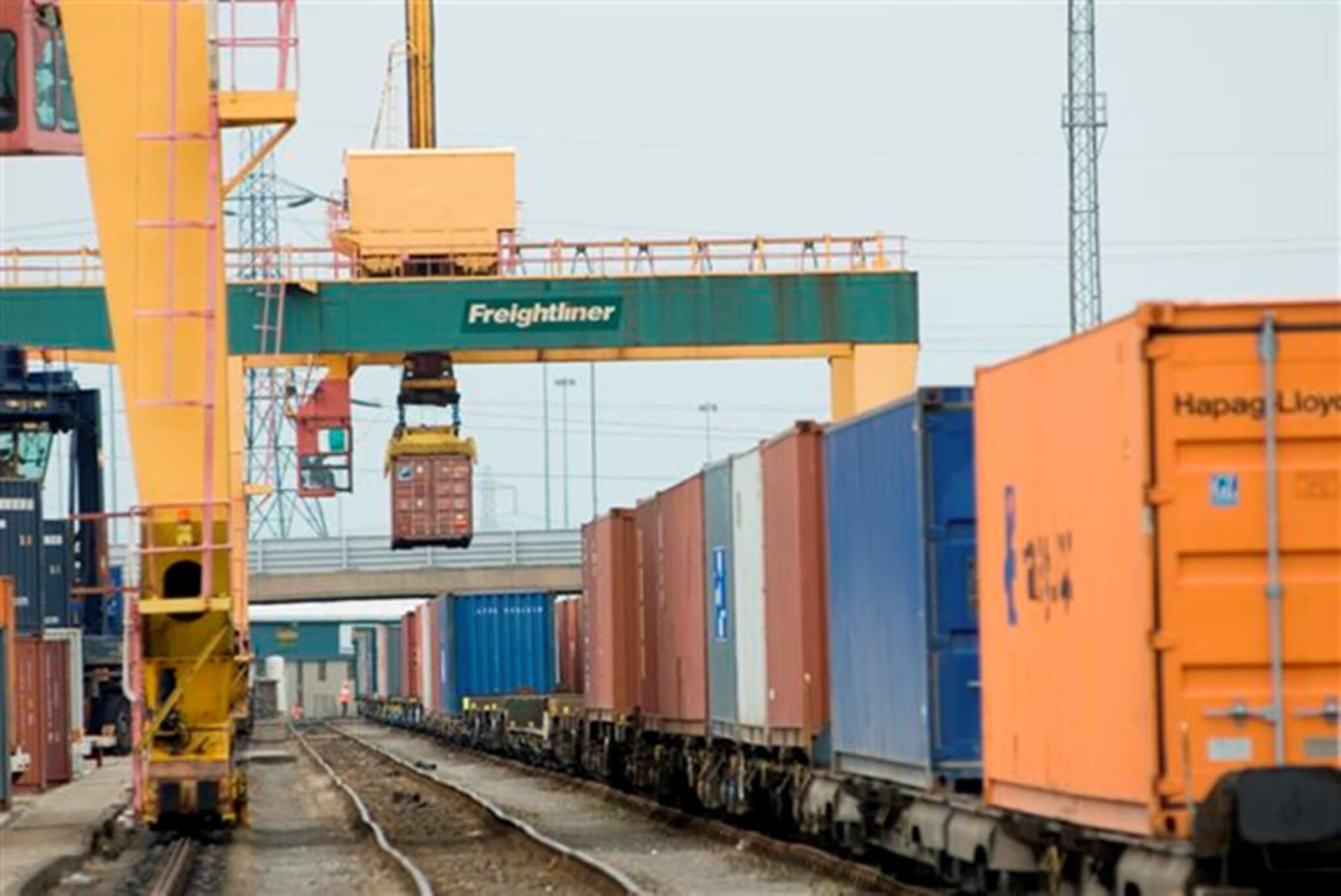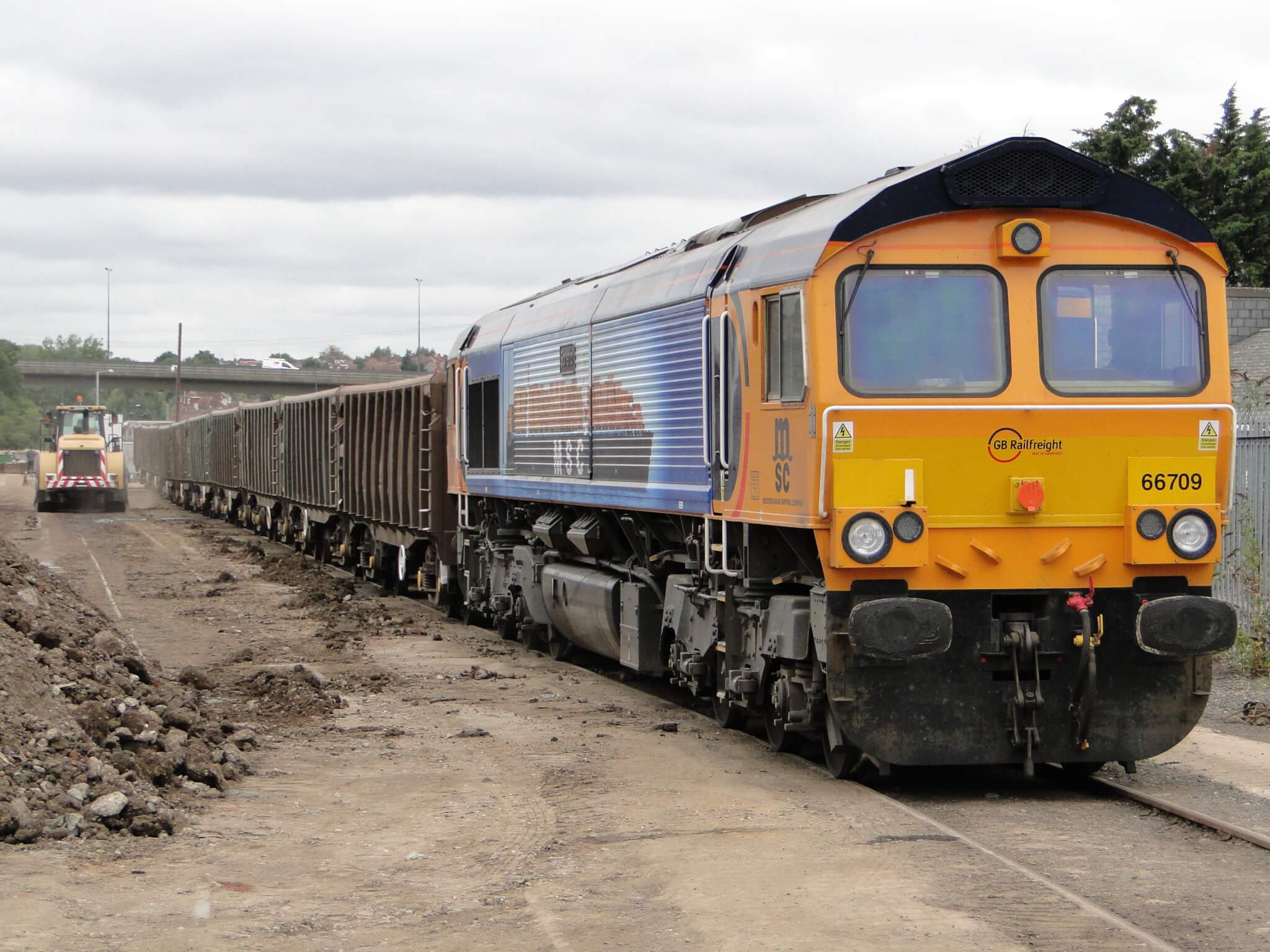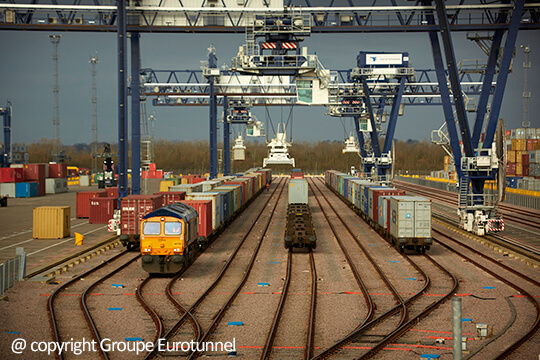The railroads in the United States are not noted for their network density, at least not in comparison with the passenger trains which crisscross the UK and Europe; however, railroads in the US are not only the interstate public Amtrak lines covering the country east to west, up and down the country’s coastlines and between Chicago and New Orleans and San Antonio. There are also 140,000 miles of private track, which are classified either as Class I (69% of total freight mileage, 7 railroads), or as Class II and III (31%; short lines and regional railroads, hundreds of railroads). This network is an important part of the supply infrastructure for many industries in the country; it also has a direct impact on the economy of the states within which these companies operate. However, it rarely attracts significant attention from politicians because, apart from not being a vote winner in most districts, it is also often subsumed into generalisations about infrastructure without reflection on the distinct position of rail within it. This problem is something which the industry in the US is acutely aware of, and reacts to very effectively.
Railroad Day 2018: Making Headway on the Hill?
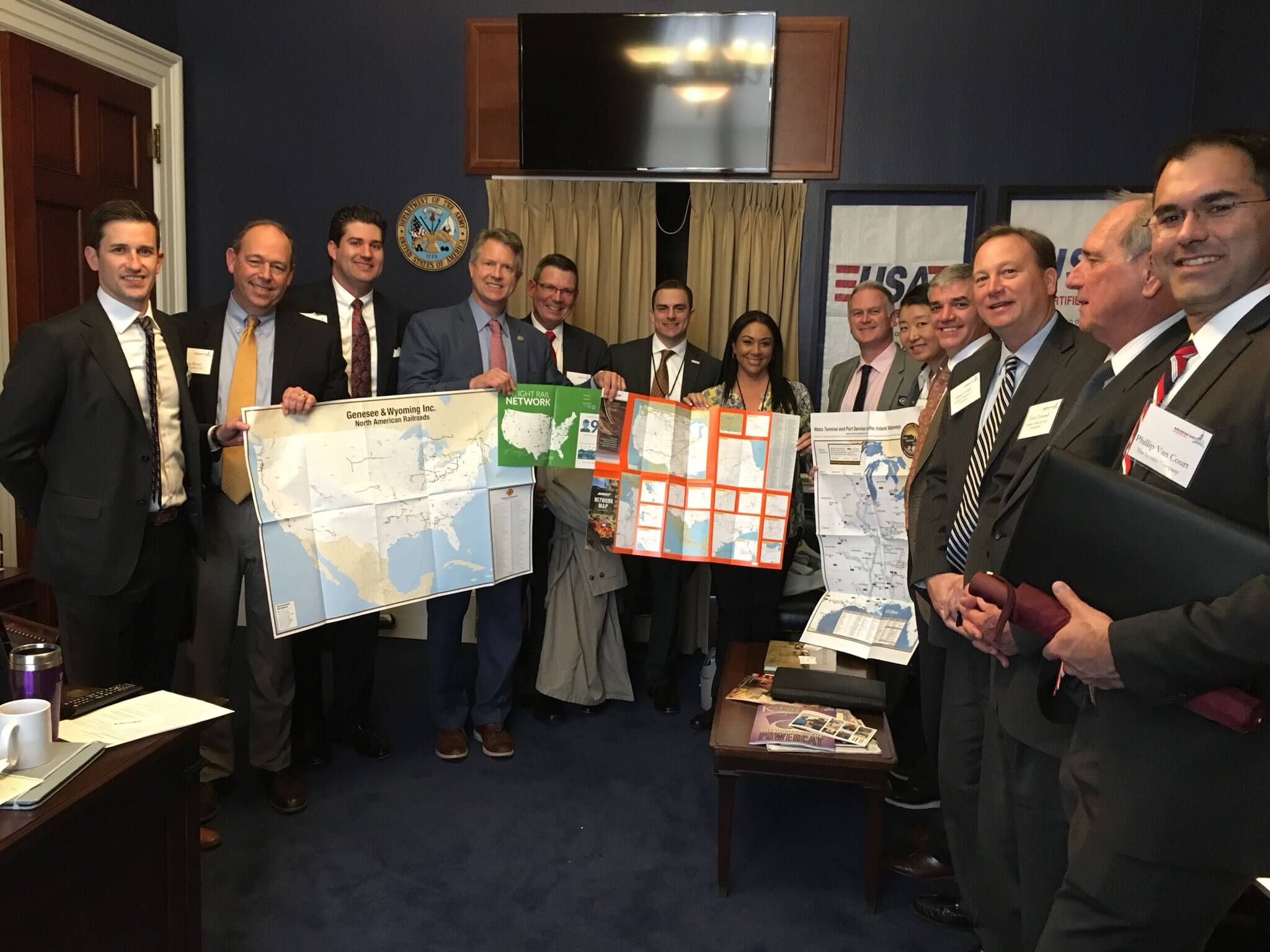
On Wednesday 7 March 2018 hundreds of representatives from around the United States from companies and organisations involved in the rail industry gathered on Capitol Hill in Washington, D.C. to act as one and advocate for the rail and manufacturing industries in hundreds of meetings with members of Congress. Ian Jefferies, Senior Vice President of Government Relations for the Association of American Railroads (AAR) told Railway-News that Railroad Day
‘allows the industry to speak with a united voice about what it takes for railroads to continue delivering for America’.
This annual event is organised by the American Short Line and Regional Railroad (ASLRRA) and is sponsored by several other organisations: the AAR, GoRail, the NRC (National Railroad Construction and Maintenance Association), the Railway Supply Institute (RSI), REMSA (Railway Engineering-Maintenance Suppliers Association), RSSI (Railway System Suppliers, Inc.) and the Railway Tie Association (RTA). Sean Winkler, Director of Advocacy for REMSA, said that
‘while these stakeholders do not always agree on every issue before Congress, they all share a belief in the importance of continued railroad investments and support safety-first policies’.
Amanda Patrick, Vice President of the League of Railway Industry Women and Vice President of Trade Shows at the Railway Supply Institute told Railway-News that
‘members of Congress want to hear from their constituents more than anyone else, so Railroad Day sends a powerful message about the impact the rail industry has on communities around the country […]. The railway supply community, which I represent, sent over 50 executives […] who were excited to have the opportunity to tout the approximately 100,000 jobs that suppliers provide in 44 states and hundreds of congressional districts.’
The objective of this type of mass-networking is to present the strength of the industry in the national and state economies which is simply not obvious from the many statistics or individual meetings with executives and association presidents; indeed, the CEOs of short lines in Kentucky or Oregon might not gain much interest from even their own representatives in Congress on any other day, but, even on Capitol Hill, turning up with 100s of other colleagues from across the industry and country surely attracts attention. In advance of the day ASLRRA told potential participants that
‘you can’t rely on the other guy to carry your message. You need to come to Washington and join with your fellow rail industry workers to help drive home to Congress the important role that this industry plays in restoring America’s economy, improving America’s environment, and connecting America in the global marketplace.’
In 2018 the participants of Railroad Day asked members of the House to:
- Extend and make permanent the Railroad Track Maintenance Tax Credit (Section 45G)
- Oppose legislation which would increase the maximum legal weight of trucks on American roads
- Preserve a balanced economic regularity framework for the rail industry
Objective: extend and make permanent the Railroad Track Maintenance Tax Credit
The 50% Short Line Tax Credit is a longstanding preoccupation of rail associations in the United States as it increases the resources available for upgrading capacity and operations on track for local, mostly freight, railroads. 45G came into effect in 2005 and extended multiple times before expiring in 2016; The Building Rail Access for Customers and the Economy (BRACE) Act to make 45G permanent was introduced to Congress on 30 January 2017, and had bipartisan support in both the House and Senate. The latest one-year extension was included in the budget bill signed off by President Trump in 2018 and the ASLRRA has led the campaign to permanently enshrine it in the tax code. In a joint op-ed for The Hill, Linda Bauer-Darr, president of the ASLRRA, and Ed Hamberger, CEO of the AAR, argued that
‘the entire 140,000-mile [freight] network will be healthier as short line railroads are empowered to expedite projects and embark on new ones that would otherwise be unfeasible.’
In 2018 attendees at Railroad Day sought to increase support for the BRACE Act. Sean Winkler told Railway-News that without the upgrades facilitated by the 50% rebate on taxable income ‘thousands of rail customers and communities that might otherwise have no rail service’. The short line tax credit is generally accepted as good policy by infrastructure analysts. In 2015 a report for the Railway Association of Canada cited the tax credit to support short line rail as a potential model for its own federal government. Ian Jefferies insisted that the rail industry had support for its defence of the tax credit from ‘both suppliers and labor’. Support for a comparatively small concession from the federal government that is a big boon for the 600+ private railroads affected and that brings investment into communities should be an easy choice for politicians from both sides of the aisle; the tax credit’s continuous extension in the past suggests it is.
Objective: oppose legislation which would increase the maximum legal weight of trucks on American roads
The other priorities, however, address more complex conflicts of interest. The second objective of the meetings was preventing an increase in the federal weight limit for trucks. Mr Winkler argues that because trucking companies are taxed differently from railroads they only pay for ‘80%’ of the impact they have on the condition of roads. He says in his statement that this is bad for the infrastructure and environment in the USA; however, the industry obviously also has an incentive to oppose any increases in the capacity of their competitors in freight transport. Of all of the priorities for the day, discussing 45G was probably the least controversial. Indeed, the two measures are linked: highway infrastructure is maintained by the federal and state governments and trucks cause damage to these roads. Investing in freight railroads reduces the financial burden on the taxpayer.
Objective: preserve a balanced economic regularity framework for the rail industry
The ‘preservation of a balanced economic framework,’ however, is a much more complex objective. Mr Winkler describes it as industry regulation that ‘reasonably balances the needs of railroads, shippers and consumers’. It essentially amounts to securing sympathy for the measures which the rail industry believes are the most effective in supporting the security, improvement and expansion of its current operations. The definition of what is reasonable when making decisions that involve multiple parties and strive to achieve balance between them is more easily said than done. In 2018 the principal concerns for the rail industry are the proposals by the Surface Transportation Board which the AAR describes as ‘punishing’. These proposals include ‘revised reciprocal switching,’ described by the AAR as ‘forced access’ which would require railroads to permit other carriers to use their tracks. This is obviously a disadvantage for individual railroads as it facilitates the activities of their competition. The purpose of this initiative was to assist railroads in maintaining sufficient revenue from charges to shippers to maintain and improve their operations, it would have to be implemented well.
Railroad Day allows the rail industry to voice its concerns and objectives to lawmakers. The awareness and good will generated by the face-to-face lobbying and in-depth discussions facilitated by Railroad Day thus allow an often overlooked industry to make its own claims about the policies which would benefit them, instead of becoming passive recipients of regulations which do not necessarily consider their perspective.
FOR ALL THE LATEST INFORMATION, NEWS, IMAGES, VIDEOS AND ARTICLES ON ALL ASPECTS OF INFRASTRUCTURE, PLEASE CLICK HERE.

















